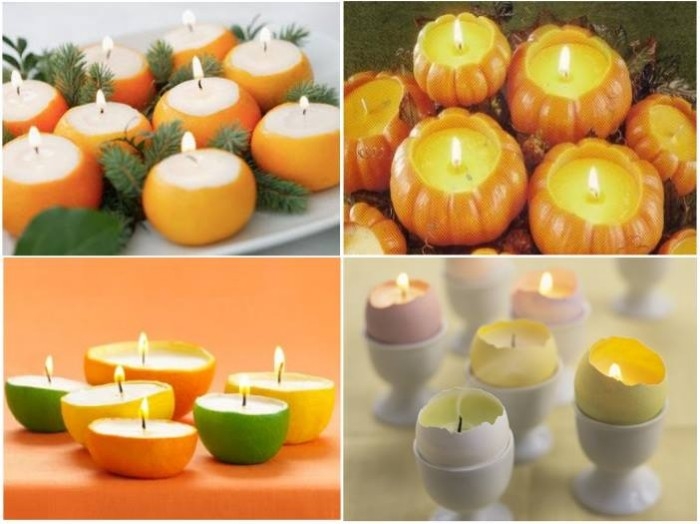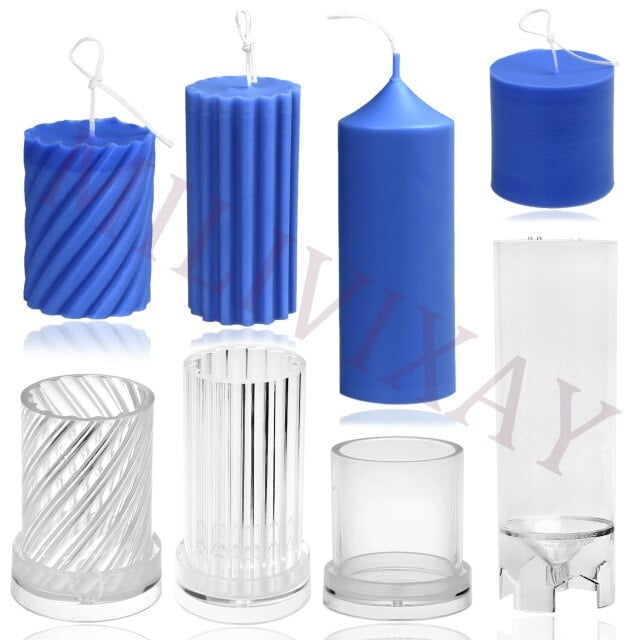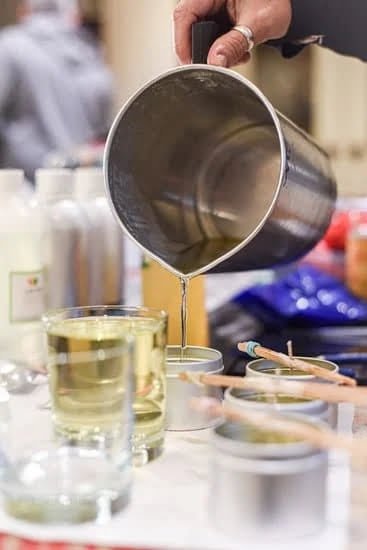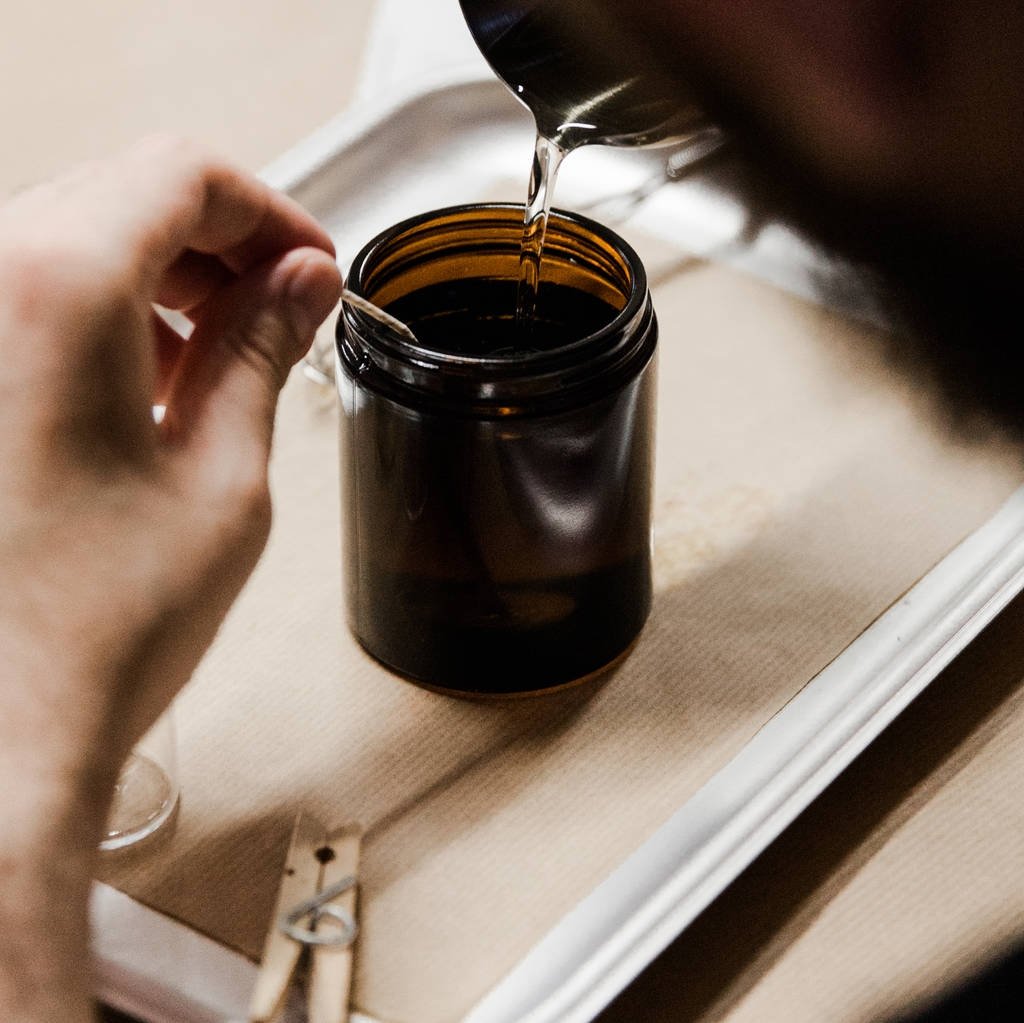When making candles, what temperature you use is a crucial factor that can greatly impact the quality and outcome of your final product. Temperature control plays a significant role in candle making, affecting everything from the consistency of the wax to the burning characteristics of the finished candle. In this article, we will delve into the importance of understanding temperature in candle making and how it can make or break your DIY candle project.
Temperature control in candle making is not just a matter of heating wax to a certain degree and pouring it into molds. The science behind temperature regulation is intricate and complex, as different types of wax have varying melting points and optimal pouring temperatures. For instance, soy wax typically melts at a lower temperature than paraffin wax, requiring careful attention to detail when heating and cooling the wax to achieve the desired results.
To ensure successful candle making, it is essential to know the optimal temperature settings for different types of waxes. By monitoring and controlling the temperature throughout the entire process, you can prevent issues such as cracking, frosting, or uneven burning. Additionally, having the right tools and equipment to regulate temperature accurately is crucial for achieving consistent and professional-looking candles.
The Science Behind Temperature Control in Candle Making
Temperature control is a crucial aspect of candle making that directly impacts the quality and outcome of your finished candles. Understanding the science behind temperature control is essential for ensuring successful results with each candle-making session. When making candles, what temperature you work with can affect everything from the texture and appearance of the candles to their burn time and fragrance throw.
To shed some light on the importance of temperature in candle making, here are some key points to consider:
- Temperature affects the viscosity of the wax: When wax is heated to specific temperatures, it reaches different levels of viscosity. A higher temperature leads to lower viscosity, making it easier for fragrance oils to blend evenly into the wax.
- Improper temperatures can cause issues with adhesion: If the wax is too hot or too cold when pouring into containers, it may not adhere properly to the sides, resulting in sinkholes or uneven surfaces.
- Temperature impacts curing and cooling times: The rate at which candles cool and set depends on the temperature of the environment. Higher temperatures can speed up this process but may also lead to cracking or frosting if not controlled properly.
Maintaining precise temperature control throughout the entire candle making process is key to achieving professional-quality candles that burn evenly and emit a strong scent throw. By understanding the science behind how temperature influences various aspects of candle making, you can troubleshoot issues more effectively and create beautiful candles every time.
Optimal Temperature Settings for Different Types of Wax
One of the critical factors to consider when making candles is the temperature at which you work with the wax. The optimal temperature settings for different types of wax can vary significantly and can greatly impact the quality and outcome of your candle-making process.
When making candles, what temperature you use is crucial in order to achieve the desired results. For example, soy wax typically performs best when melted between 170°F and 180°F, while beeswax requires a higher melting point of around 185°F to 200°F. Paraffin wax, on the other hand, has a broader range of melting temperatures depending on its grade, but generally falls between 120°F and 160°F.
Meticulously following the recommended temperature guidelines for each type of wax is essential in ensuring that your candles turn out as intended. Failure to adhere to these temperature settings can result in issues such as poor fragrance retention, uneven burning, or even structural instability in the finished candle. It is crucial to invest in a reliable thermometer and other necessary equipment to monitor and control the temperature accurately throughout the candle-making process.
| Wax Type | Optimal Temperature Range |
|---|---|
| Soy Wax | 170°F – 180°F |
| Beeswax | 185°F – 200°F |
Tools and Equipment Needed to Monitor and Control Temperature
When making candles, what temperature you use is a critical factor that can greatly impact the final product. To ensure that your candles turn out just right, it is essential to have the proper tools and equipment to monitor and control the temperature throughout the candle making process.
One of the most important tools you will need is a reliable thermometer. A good quality thermometer will allow you to accurately measure the temperature of your wax as you heat it and add fragrance oils or dyes. It is crucial to have an accurate reading of the temperature to prevent overheating or underheating, which can affect the quality and performance of your candles.
In addition to a thermometer, a double boiler or a dedicated wax melting pot can also be useful in controlling the temperature during candle making. These tools help regulate the heat distribution more evenly, reducing the risk of hot spots that can lead to uneven melting or burning of the wax. By using these tools in conjunction with your thermometer, you can maintain a consistent temperature throughout the entire candle making process.
| Tools and Equipment | Function |
|---|---|
| Thermometer | Measuring the temperature accurately |
| Double boiler or Wax melting pot | Regulating heat distribution for even melting |
Common Temperature-Related Issues and How to Avoid Them
Overheating
One of the most common temperature-related issues in candle making is overheating. When the wax is heated above its recommended temperature, it can lead to discoloration, burning, and even safety hazards. To avoid this, it is crucial to closely monitor the temperature of the wax throughout the melting and pouring process. Use a thermometer specifically designed for candle making to ensure accuracy.
Frosting
Frosting is another common issue that can occur when making candles, especially with soy wax. This phenomenon causes a white, powdery film to form on the surface of the candle once it has cooled. To prevent frosting, try cooling your candles at a slower rate by placing them in a draft-free area or using a heat gun to smooth out any imperfections caused by rapid cooling.
Sinking Wicks
Sinking wicks are often a result of poor temperature control during the cooling process. If the surrounding environment is too cold when the candle is setting, the wax may solidify too quickly and trap air pockets under the wick. To avoid sinking wicks, make sure your candles cool in a room with stable temperature conditions and avoid placing them near any drafty areas or vents that could disrupt the cooling process.
Step-by-Step Guide to Maintaining the Right Temperature Throughout the Candle Making Process
Maintaining the right temperature throughout the candle making process is crucial to ensure that your candles turn out perfectly every time. Whether you are using paraffin, soy, beeswax, or any other type of wax, temperature plays a significant role in how your candles will set and look.
Heating the Wax
When making candles, what temperature should you heat the wax to? The ideal temperature for heating wax depends on the type of wax you are using. For example, paraffin wax typically needs to be heated to around 170-180°F (76-82°C), while soy wax may require a lower temperature of 120-150°F (49-65°C). It is important to follow the specific instructions provided by the manufacturer of your chosen wax to achieve the best results.
Adding Fragrance and Color
Once your wax has reached the appropriate melting point, it’s time to add fragrance oils and colorants. These additives should also be added at specific temperatures to prevent them from burning off or causing discoloration in your candles. Most fragrance oils can be added when the wax reaches around 185-195°F (85-91°C), while dye chips or liquid dye should be incorporated when the wax is slightly cooler at 160-180°F (71-82°C).
Pouring and Cooling
When it comes time to pour your melted wax into containers or molds, make sure that the wax is at an optimal pouring temperature. This usually falls within the range of 130-150°F (54-65°C) for most types of candles.
Additionally, it is essential to allow your candles to cool slowly and evenly at room temperature to avoid issues like sinkholes or cracking. By following these temperature guidelines throughout each step of the candle making process, you can create beautiful and high-quality candles every time.
Tips and Tricks for Achieving the Perfect Temperature Balance
When making candles, understanding and maintaining the right temperature is crucial to achieving the perfect results. Here are some tips and tricks to help you achieve the perfect temperature balance:
- Use a reliable thermometer: Invest in a high-quality thermometer specifically designed for candle making. This will ensure accurate temperature readings throughout the process.
- Avoid sudden temperature changes: Rapid changes in temperature can affect the quality of your candles. Keep your work area draft-free and try to maintain a consistent temperature throughout.
- Preheat your containers: Before pouring melted wax into containers, preheat them slightly to prevent issues like sinking or frosting.
Maintaining the right temperature balance also involves proper handling and monitoring of your materials. Here are additional tips to keep in mind:
- Keep an eye on ambient conditions: Factors such as humidity levels and room temperature can impact the candle making process. Try to work in a controlled environment whenever possible.
- Stir wax gently: When melting wax, avoid stirring too vigorously as this can introduce air bubbles which may affect the quality of your candles.
- Cool slowly and evenly: After pouring the wax into containers, allow them to cool gradually at room temperature. Avoid moving them around too much until fully set.
By following these tips and tricks, you can improve your candle making skills and create beautiful, high-quality products with the perfect temperature balance. Remember, practice makes perfect so don’t be afraid to experiment with different techniques to find what works best for you.
Expert Insights
Maintaining the right temperature when making candles is crucial for achieving successful results. Professional candle makers emphasize the importance of temperature control throughout the entire candle making process. Whether you are working with soy wax, paraffin wax, or beeswax, understanding the optimal temperature settings for each type of wax is essential for producing high-quality candles.
Expert candle makers recommend investing in quality tools and equipment to monitor and control temperature effectively. A reliable thermometer, double boiler, and heat source are essential for maintaining the right temperature consistently. By using these tools correctly, you can ensure that your candles turn out beautifully every time.
In conclusion, mastering temperature control in candle making is a skill that requires practice and attention to detail. By following the advice of professional candle makers and implementing proper temperature management techniques, you can create stunning candles that burn evenly and emit a lovely fragrance. Remember that consistency is key when it comes to temperature control in candle making – so stay vigilant and keep refining your techniques to produce exceptional candles with every batch.
Frequently Asked Questions
What Is the Best Temp to Pour Candles?
The best temperature to pour candles is typically around 120-140 degrees Fahrenheit. This allows the wax to cool properly without causing any imperfections like sink holes or air pockets.
What Temperature Do You Add Fragrance When Making Candles?
Fragrance should be added to candles when the melted wax reaches a temperature of around 185-195 degrees Fahrenheit. Adding fragrance at this temperature ensures that it will blend evenly and hold its scent well.
What Temperature Does Wax Need to Be to Make a Candle?
The temperature of the wax needs to be between 160-180 degrees Fahrenheit to make a candle successfully. This range allows the wax to be hot enough to fully incorporate any additives but cool enough so that it sets properly in the mold.

Welcome to my candle making blog! In this blog, I will be sharing my tips and tricks for making candles. I will also be sharing some of my favorite recipes.





